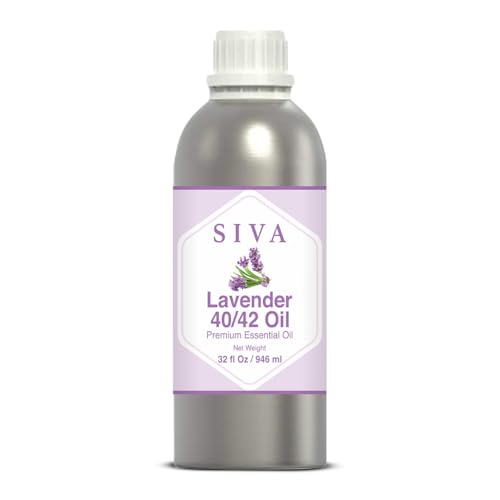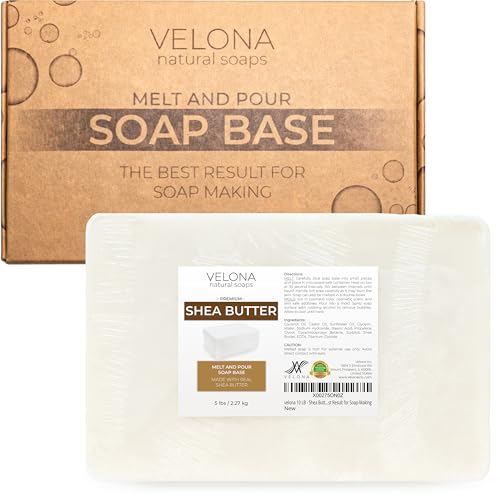ResolvableOwl
Notorious Lyear
Self-imposed challenge: Make soap only with ingredients whose names start with a specific letter.
Self-imposed loopholes: Ingredients that are necessary for technically legit soap (lye, antioxidants, chelators) are allowed to start with other letters. And: It is permitted to choose the language for the names of the ingredients.
My choice: M (language: German)


100 g almonds + 1.3 L water (soymilk machine to an avail)
I dissolved the NaOH in the almond milk first, and only then the lactic+citric acid, to avoid weird curdling of the almond milk. It turned out that the almond components didn't bother to flocculate in strong alkaline either.
Anyway, the lye still hot and the oils molten (put aside a small amount for post-cook superfat), it was time to combine them into a batter. Or, to be precise: two (but that was mainly due to my unfortunate choice of beakers to stew the batter in.)
Later on, split containers would be needed for the mastic/no mastic phase anyway, and so the batter was split in the first hour of cooking as well. I just wanted to follow the cult of HP microbatching as preached by @Bubble Agent and @Johnez!

To much surprise, it turned out that, though PP plastic (formally heat-safe up to 121°C), boiling water was hot enough to undo the deep drawing memory of the material, so the cups warped and shrunk!

Fortunately not enough deformation to pose a problem, but weird anyway. Should I do this more often, I'll invest into some stainless steel gear for sure.
Back to HP cooking: Once the “potato mash” phase has slowly turned into the “vaseline phase” (proper gel, saponification mostly finished), I combined the two batters (still lye-heavy at this time), and split them evenly across two (new) cups. Into one I added the saved PCSF, in the other the mastic, that I had previously dissolved/molten into some PCSF as well.
(More on mastic in a follow-up comment)
It didn't take long until the mass has turned in something similar to gel phase again. Some plop and glop later, I had it squeezed into a squarish column mould.
The other day, it was time to escalate the “M” silliness to the shape of the bars. Apart from some chipping from the HP soap (what's colloquially referred to as “rustic look”), cutting was straightforward. I cut out a broad triangle at the top, and two at the bottom, so that the bars got this self-explanatory shape. Not that I could confuse them with anything else – the macadamia oil once again has lent them some “bodily” colour.
From washing the tools after cutting, this soap does have quite some explosive lather! I can't wait to give them the rest they need now, and in a few weeks test if this has anything to do with the mastic, or it's “just” the laurics (from murumuru) + macadamia + mango butter, that is the new secret weapon in abundant, fluffy, thick and creamy suds.
More on mastic resin
Mastic is the resin of Pistacia lentiscus harvested on the Greek island of Chios.
As such, it contains free acids. I didn't want to add it early in the process to prevent early solidification/soap on a stick (cf. pine tar soap). Sources attribute oil solubility to it, so I shifted its application to the post-cook superfat (PCSF).
To make things more thorough, I found a SAP source for mastic, saying it has a K-SAP of 82-92: so I cut down 0.4 g of the oils for 1 g of mastic added.
There are few mentionings of mastic in soap:
http://ayalasmellyblog.blogspot.com/2017/10/mastic-soap.htmlhttps://www.soapmakingforum.com/threads/mastic-mastiha-resin.76714/https://www.soapmakingforum.com/threads/mastic-soap.25879/and neither gave helpful usage rate numbers. So I guessed that 1.5%TOW would be a good starting point.
My mastic is in tear shape (see the drops in the incense brazier in the photo above), and I'm too lazy to grind it up. So I heated oils branched off from the batch oils, and threw in the tears. First not much happened, but around 100°C they started to soften, and rather quickly dissolve/melt into the oils . At the same time, the melt started to give off dense, aromatic fumes! Gave me a wistful memory flash-back of the tiny, poorly lit Greek churches, where the light of the candles would make the gold mosaic glow, and you can hardly breathe in the fog banks of incense.
. At the same time, the melt started to give off dense, aromatic fumes! Gave me a wistful memory flash-back of the tiny, poorly lit Greek churches, where the light of the candles would make the gold mosaic glow, and you can hardly breathe in the fog banks of incense.
Anyway, immediately after adding that mastic mix to the soap batter, that odour disappeared. The soaps hardly smell different from each other. Yet, the mastic tears themselves don't smell either, so I should really judge this only after some serious amount of cure.
Self-imposed loopholes: Ingredients that are necessary for technically legit soap (lye, antioxidants, chelators) are allowed to start with other letters. And: It is permitted to choose the language for the names of the ingredients.
My choice: M (language: German)

- Oils: macadamia nut oil, corn oil (de: „Maiskeimöl“), mango butter, murumuru – 25% each (plus ROE)
- Liquid: almond milk (de: „Mandelmilch“) – full water replacement
- Additive: lactic acid (de: „Milchsäure“) – 2%TOW sodium lactate, in the hope it would help with HP batter fluidity

- Additive/fragrance: mastic resin – 1.5%TOW, added to half of the batch
- Process: HP microbatching

100 g almonds + 1.3 L water (soymilk machine to an avail)
I dissolved the NaOH in the almond milk first, and only then the lactic+citric acid, to avoid weird curdling of the almond milk. It turned out that the almond components didn't bother to flocculate in strong alkaline either.
Anyway, the lye still hot and the oils molten (put aside a small amount for post-cook superfat), it was time to combine them into a batter. Or, to be precise: two (but that was mainly due to my unfortunate choice of beakers to stew the batter in.)
Later on, split containers would be needed for the mastic/no mastic phase anyway, and so the batter was split in the first hour of cooking as well. I just wanted to follow the cult of HP microbatching as preached by @Bubble Agent and @Johnez!

To much surprise, it turned out that, though PP plastic (formally heat-safe up to 121°C), boiling water was hot enough to undo the deep drawing memory of the material, so the cups warped and shrunk!

Fortunately not enough deformation to pose a problem, but weird anyway. Should I do this more often, I'll invest into some stainless steel gear for sure.
Back to HP cooking: Once the “potato mash” phase has slowly turned into the “vaseline phase” (proper gel, saponification mostly finished), I combined the two batters (still lye-heavy at this time), and split them evenly across two (new) cups. Into one I added the saved PCSF, in the other the mastic, that I had previously dissolved/molten into some PCSF as well.
(More on mastic in a follow-up comment)
It didn't take long until the mass has turned in something similar to gel phase again. Some plop and glop later, I had it squeezed into a squarish column mould.
The other day, it was time to escalate the “M” silliness to the shape of the bars. Apart from some chipping from the HP soap (what's colloquially referred to as “rustic look”), cutting was straightforward. I cut out a broad triangle at the top, and two at the bottom, so that the bars got this self-explanatory shape. Not that I could confuse them with anything else – the macadamia oil once again has lent them some “bodily” colour.
From washing the tools after cutting, this soap does have quite some explosive lather! I can't wait to give them the rest they need now, and in a few weeks test if this has anything to do with the mastic, or it's “just” the laurics (from murumuru) + macadamia + mango butter, that is the new secret weapon in abundant, fluffy, thick and creamy suds.
More on mastic resin
Mastic is the resin of Pistacia lentiscus harvested on the Greek island of Chios.
As such, it contains free acids. I didn't want to add it early in the process to prevent early solidification/soap on a stick (cf. pine tar soap). Sources attribute oil solubility to it, so I shifted its application to the post-cook superfat (PCSF).
To make things more thorough, I found a SAP source for mastic, saying it has a K-SAP of 82-92: so I cut down 0.4 g of the oils for 1 g of mastic added.
There are few mentionings of mastic in soap:
http://ayalasmellyblog.blogspot.com/2017/10/mastic-soap.htmlhttps://www.soapmakingforum.com/threads/mastic-mastiha-resin.76714/https://www.soapmakingforum.com/threads/mastic-soap.25879/and neither gave helpful usage rate numbers. So I guessed that 1.5%TOW would be a good starting point.
My mastic is in tear shape (see the drops in the incense brazier in the photo above), and I'm too lazy to grind it up. So I heated oils branched off from the batch oils, and threw in the tears. First not much happened, but around 100°C they started to soften, and rather quickly dissolve/melt into the oils
Anyway, immediately after adding that mastic mix to the soap batter, that odour disappeared. The soaps hardly smell different from each other. Yet, the mastic tears themselves don't smell either, so I should really judge this only after some serious amount of cure.

















































